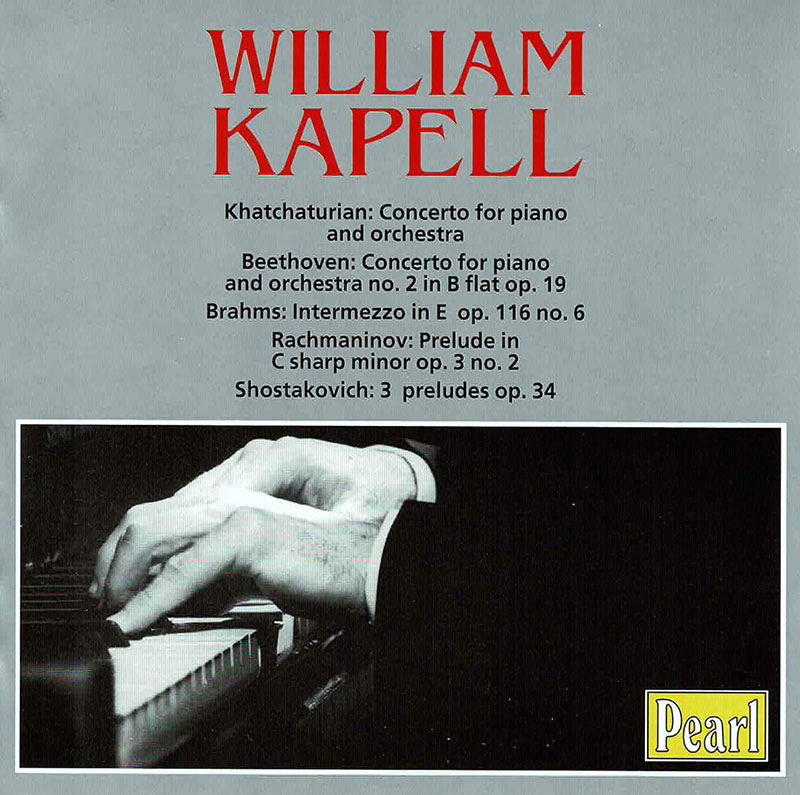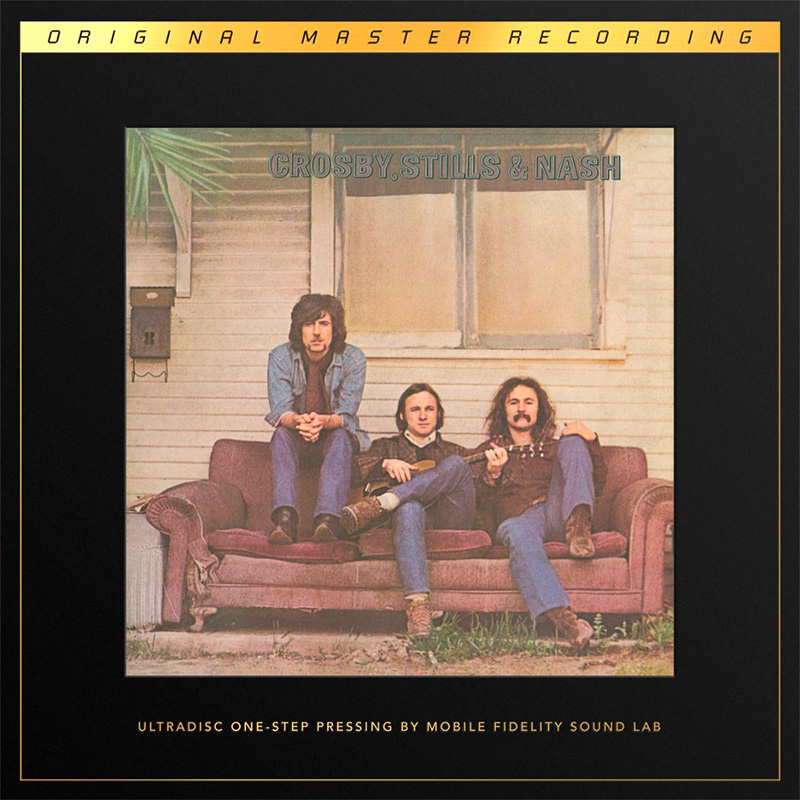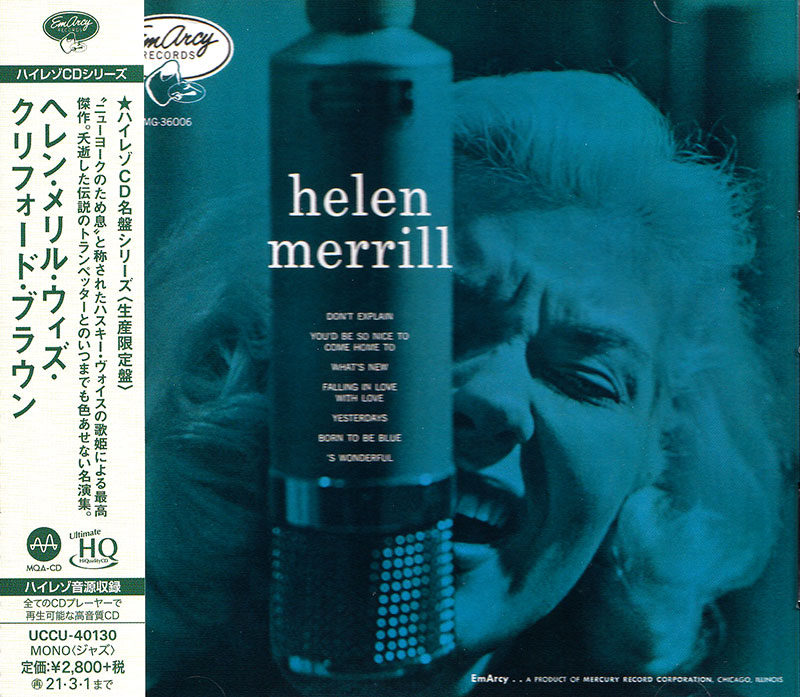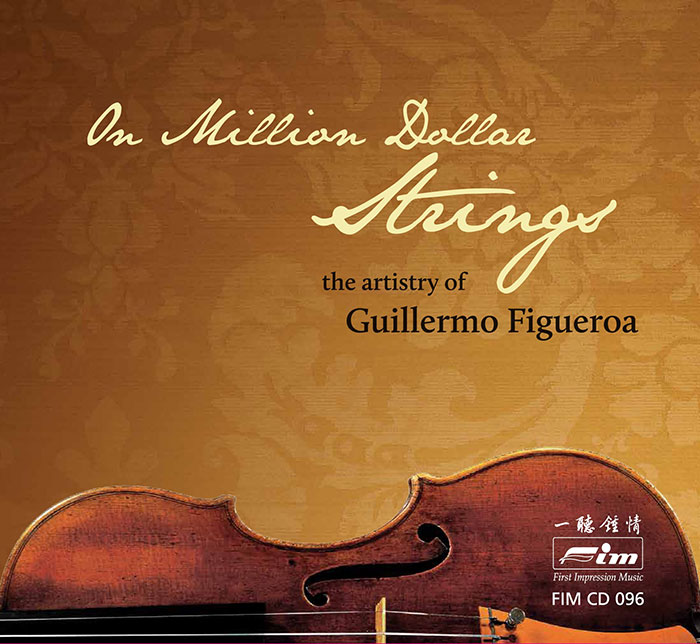Logowanie
OSTATNIE EGZEMPLARZE
Jakość LABORATORYJNA!
ORFF, Gundula Janowitz, Gerhard Stolze, Dietrich-Fischer Dieskau, Deutsche Oper Berlin, Eugen Jochum
Carmina Burana
ESOTERIC - NUMER JEDEN W ŚWIECIE AUDIOFILII I MELOMANÓW - SACD HYBR
Winylowy niezbędnik
ClearAudio
Essence MC
kumulacja zoptymalizowana: najlepsze z najważniejszych i najważniejsze z najlepszych cech przetworników Clearaudio
Direct-To-Disc
PIAZZOLLA, ChamberJam Europe
Tangos del Ángel y del Diablo
Direct-to-Disc ( D2D ) - Numbered Limited Edition
KHACHATURIAN, BEETHOVEN, BRAHMS, RACHMANINOV, SHOSTAKOVICH, William Kapell, Boston Symphony Orchestra, NBC Symphony Orchestra, Serge Koussevitzky
Piano Concerto, in D flat major / Piano Concerto No. 2 in B flat major

- 1. Piano Concerto, in D flat major (also arranged for 2 pianos)
- Composed by Aram Khachaturian
- Performed by Boston Symphony Orchestra with William Kapell
- 2. Piano Concerto No. 2 in B flat major, Op. 19
- Composed by Ludwig van Beethoven
- Performed by NBC Symphony Orchestra with William Kapell
- Conducted by Vladimir Golschmann
- 3. Intermezzo for piano in E major, Op. 116/6
- Composed by Johannes Brahms
- 4. Morceaux de fantaisie (5), for piano, Op. 3
- Composed by Sergey Rachmaninov
- 5. Preludes (24), for piano, Op. 34 No.5 in D major
- Composed by Dmitry Shostakovich
- 6. Preludes (24), for piano, Op. 34 No.10 in C sharp minor
- Composed by Dmitry Shostakovich
- 7. Preludes (24), for piano, Op. 34 No.24 in D minor
- Composed by Dmitry Shostakovich
- William Kapell - piano
- Boston Symphony Orchestra - orchestra
- NBC Symphony Orchestra - orchestra
- Serge Koussevitzky - conductor
- KHACHATURIAN
- BEETHOVEN
- BRAHMS
- RACHMANINOV
- SHOSTAKOVICH
WIILIAM KAPELL Anyone interested in studying the history of musical performance during this century can give thanks for the invention of the gramophone as many hundreds of important instrumentalists, vocalists, chamber groups, orchestras and conductors, have left comprehensive discographies for posterity to appreciate and evaluate while their predecessors will forever remain little more than names kept alive by contemporaneous written accounts of their mastery. Frustratingly there have also been a number of equally great performers who, while living in the era of the 78 rpm disc, were, for various reasons, either badly treated by the record companies or did not live long enough to realise their complete potential. Their few recordings are treasured by collectors as rare gems, while occasioning genuine regret that they cannot be heard in more illustrations of their genius. One conspicuous member of the latter group was William Kapell, a sadly short-lived pianist of rare brilliance in whom a technique of extraordinary virtuosity was combined with musicality of an uncommon order. This was a vital element in the success of his playing, for without it music-making can be reduced to mere empty rhetoric. The present disc gives the listener an opportunity to re-assess Kapell's work, gathering together, as it does, recordings which stand as testament to the wide range of his versatility. From the spectacular bravura and taut drive of the colourful Khatchaturian concerto through the infinitely more delicate charm and grace of the Beethoven, the depth of the sound in the Brahms intermezzo to the dramatic realisation of the famous Rachmaninov Prelude in C sharp minor. Thankfully all were captured by the Victor label's engineers in recorded sound of a range and clarity which was remarkably advanced for the period and which still sounds impressive today. William Kapell, a native New Yorker, was born in September 1922. His first serious piano studies were with Dorothea Anderson La Follette, then a spell with Olga Samaroff who taught him both in Philadelphia at the Conservatoire of Music and at the Juilhard School in Manhattan. Kapell's exceptional gifts were so remarkable that once he had finished his formal education his subsequent rise to the top was rapid in the extreme. In 1941 while still in his `teens Kapell won the Philadelphia orchestra's youth competition. This recognition of his quality was soon followed by an award from the Naumberg Foundation, an organisation which also sponsored his New York debut at the old Town Hall. The engagement itself won him yet another prize - that given annually for the year's outstanding concert by a musician under the age of thirty. Kapell's initial fame was boosted by his enthusiastic advocacy of the newly-written, ultra-romantic piano concerto by the Armenian Aram Khatchaturian. The composer was then a name new to the United States, the concerto served as an introduction to his music and was frequently programmed by orchestras throughout the country. While the real importance of the work was hotly debated by critics (especially in England), there was no doubting its immense popularity with the concert-going public. Even though the phenomenon was comparatively transitory, Khatchaturian became something of a cult figure in America. Much of his music certainly can be immediately appealing; its longer-term place in the history of twentieth century composition is rather more uncertain. Apart from its highly-individual use of rhapsodic Caucasian folk melody, the concerto itself is rooted firmly in the Russian tradition of Borodin and Tchaikovsky. Their influence is seen, as it were, through modern eyes. The piece is typical of its composer in its audaciously vivid orchestration, its lush textures, its characteristically blatant melodic content. After a somewhat rambling first movement, the andante, complete with passages originally written for the unusual sound of the Flexatone (unkindly described by one critic as sounding like a Swanee Whistle), is a highly expressive, reflective piece of writing. It can be very effective in performance and is certainly so in Kapell 's recording, with Koussevitzky and the Boston Symphony also in superb form. The pianist is dominant throughout with playing of the utmost flexibility and bite, but his sheer dexterity in the clamorous last movement, busting with almost jazzy cross rhythms, is little short of breathtaking. Using the Khatchaturian concerto as a vehicle to help establish his name had its disadvantages as well as its advantages for William Kapell. The general tenor of the concerto is one of rather ostentatious glitter and Kapell's frequent performances of it often led to him being referred to in some critical circles as a musician who paraded his virtuosity for its own sake. Actually nothing could have been further from the truth as he proceeded to show with enormous aplomb during the remainder of his brief life. Looking back at his career with the perspective of more than fifty years, it becomes obvious that above all else William Kapell was a multifaceted musician. He was as capable of giving a memorable, elegant performance of a work from the Classical repertoire as he was of playing a flamboyant showpiece such as the Khatchaturian. The wonderful performance of the Beethoven B flat concerto included on the disc makes the point perfectly as the unquestionable technical prowess is used purely in the service of the music without, for a moment, drawing attention to itself. From Khatchaturian to Beethoven is a quantum leap, not only in terms of style, but also in the technique needed to do it total justice; Kapell makes the difficult transition with almost indecent ease. The opening of the first movement is, for once, genuinely full of the requisite brio and carefully contrasted with the more meditative passages. Kapell's articulation is as clean and crisp as the air on a sunny, frosty winter's morning. His playing in the beautiful Andante is gloriously warm, lyrical and long-lined, while the Rondo positively brims over with joyous good humour, prompted by the pianist's marvellously rhythmical playing. His thistledown lightness of touch is close to the ideal, the articulation again a thing of wonder: the technically-demanding octave passages are precise as could be. In the Brahms Intermezzo Kapell conjures from his instrument all the rich sonority which should be the sine qua non of any performance of the composer's piano music. The music's mood of hushed contemplation is most expertly sustained. While he quickly became regarded as a specialist in contemporary music (the three preludes from Shostakovich's op. 34 set are fine examples of his facility in this field), Kapell's repertoire was actually far wider than this narrow definition would suggest, taking in solo pieces and concertos from many different schools and periods of music. The deservedly high regard he was held in by his peers was demonstrated when, some years after his death, Aaron Copland dedicated his `Fantasy for Piano' to Kapell's rmemóry. In his performance of the Shostakovich preludes the pianist skillfully brings out all the typical quirky humour inherent in the D major. In complete contrast the introspective C sharp minor, so reminiscent in its sombre mood of the slow movements of the composer's Symphonies, is given a reading of appropriate intensity. The bold D minor (all twenty-five or so seconds of it) rounds off the group in striking fashion. Tragically William Kapell's international career was over almost before it had started. From the midforties onwards he became increasingly in demand for engagements overseas and, consequently. travelled abroad on a regular basis, although. unfortunately, he was never to perform in the United Kingdom. It was on his return from a trip to Australia that he met his untimely end when he was killed in a plane crash at King's Moun- tain in San Francisco. It is often said that those whom the Gods love die young, but in the case of William Kapell that is of little consolation to a world of music deprived of one of its brightest young hopes long before he had ever begun to reach maturity. © 1997 Tony Watts Kapell may be heard also on GEMM CD 9194, in a programme which includes Chopin, the Rachmaninov Paganini Rbapsody, Schubert lieder with Maria Stader and a different transfer of the Beethoven Piano Concerto No. 2. Producer's note William Kapell's all-too-few recordings are treasured by those lucky enough to be able to have them in original form. Although over 50 years old, the 78 rpm masters were made to very high standards with the result than modern technology has enabled the stunning and immediate sound to be restored in all its glory, especially in the Khatchaturian concerto whose impact comes across as though heard for the first time. Both recording and performance are simply perfect: few allowances need to be made for the age of the records which include two of the longest ever ordinary 78 rpm sides (5' 33" and 5' 25") with the consequent difficulties in controlling speed variations and frequency response at side ends. There is some deformation of the master (probably caused by faulty processing) of one of the sides of the Beethoven which causes minor speed fluctuations towards the end of the side. These have been minimised as far as possible but may be detected in one or two small passages. Similarly, one side of the 2nd movement appears to be a dubbing made at the time and again minor speed variations have been minimised. The Beethoven concerto records were made available through the generosity of Niels Ravn of Gentofte, Denmark.

























